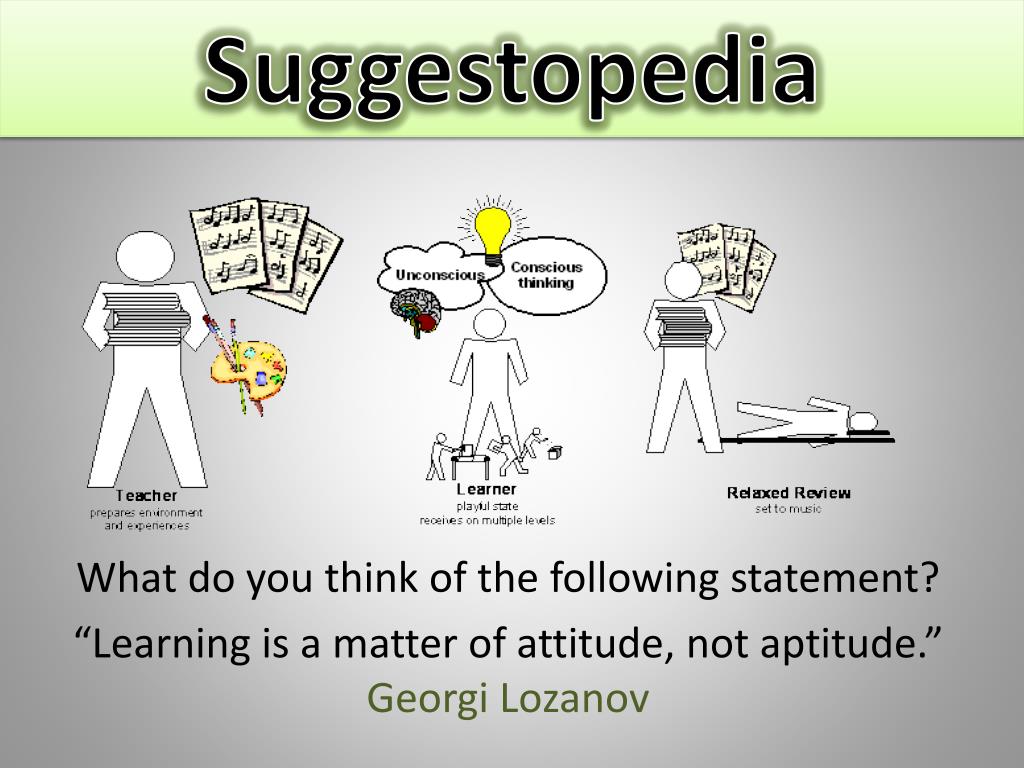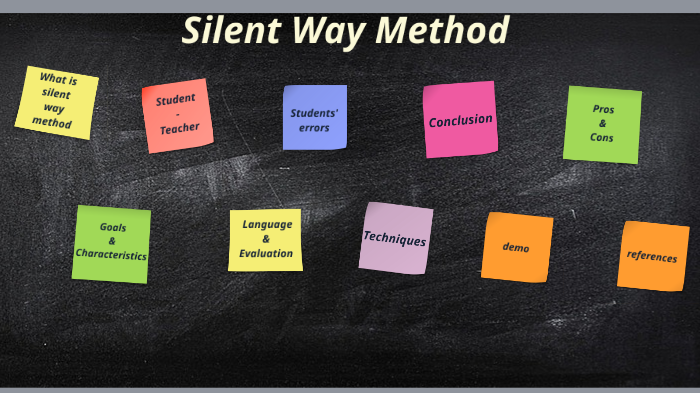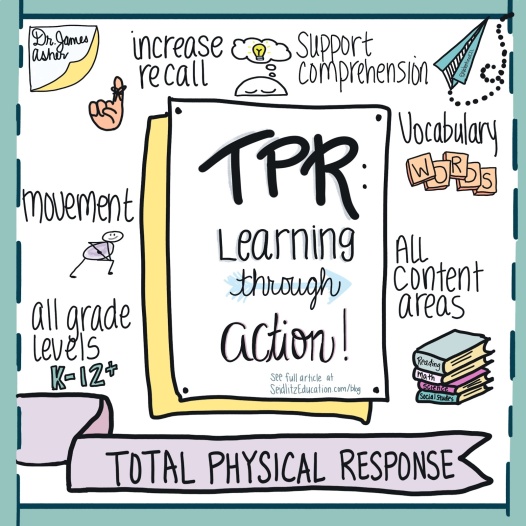Table of Contents
Today English Language is in high demand and fluently speaking in English is mandatory in every field. Professionally or personally every person speaks in English starting from elementary education to working as a profession. Command over the English Language is the need of the hour and is an essential skill in your career. Whether you are doing an English Language job role, a technical professional or a business person you need to speak in English. Being a Universal Language English is widely used for communication in profession, trade, business or travel. You can talk in English to people from different places, backgrounds, cultures and native languages. Mastering English Language and fluently speaking in English is one of the most essential skills as per the industry requirement.
There are various Teaching Methods and approaches for proficiency in the English language that are effective and improve your English Writing. After researching various issues people face while speaking or writing in English, there are several English teaching Methods to upskill the language. Study and focus on the area of improvement, thus an effective way to improve the Spoken English language. From Modern Classroom discussions to English conversation classes method of teaching the English language has changed. Teaching Methods have different strategies to overcome the weaknesses of learners. Studying language with various effective approaches and regular practice of English Conversation will boost fluency in spoken English and Command over the language.
In addition to this, there are various upgraded English language Courses from top Educational Institute like Henry Harvin that provide advanced courses to improve English Writing, Grammar, Spoken English, Content Writing and more. These institute provide best training program, practical exposure, language conversation classes guided from professionally expert trainers to improve learners language skills. in addition to this, Henry Harvin provide Certificate and placement support in top hiring Companies after successfully completion of Course.
Significance of English Language in Today’s World
The significance of the English language in today’s world is vast and multifaceted. English is a Universal Language and plays a key role in various arenas:
- Global Communication
-
- English is a common language for people from diverse backgrounds to communicate effectively. It is the most widely spoken second language worldwide.
- English is the primary language of diplomacy and international relations.
- Business and Trade
-
- Multinational corporations often use English for international trade, business negotiations, and corporate communications.
- Proficiency in English Language can enhance employability and career advancement.
- Education
-
- English is the primary language of instruction in many prestigious universities and academic institutions around the world.
- Most of the educational resources, scientific journals, literature, and technical manuals are available in English.
- Digital Platform
-
- English dominates the digital landscape, being the most common language used on the Internet, social media, and digital platforms.
- Media and Entertainment
-
- English is the primary language of many global news outlets, including CNN, BBC, and Reuters. It plays a crucial role in international journalism and media.
- Famous films, music, television shows, and top-author books are produced in English, making it a key language in the global entertainment industry.
- Travel and Tourism
-
- English is commonly used as the language for tourists, enabling easier communication in airports, hotels, restaurants, and tourist attractions.
- Science and Research
- Most scientific journals and papers are published in English, making it essential for researchers to understand and readable.
Modern Classroom Teaching Methods
People can frequently distinguish the finest language educators by their dedication to Modern Classroom Teaching Techniques. They always try new approaches to teaching the English Language to keep their students engaged and interested in the learning new tools to help them improve their English.
TEFL Certification in India
45-min online masterclass with skill certification on completion
Mentored By Chetan Bhagat
$99 FREE
Access Expires in 24Hrs

Upcoming Batches of TEFL Course :-
| Batch | Mode | Price | To Enrol |
|---|---|---|---|
| Starts Every Week | Live Virtual Classroom | 26500 | ENROLL NOW |
“Classroom” is a word that brings to our mind a setting wherein a teacher stands in front of a class of 30 to 40 students, delivering a lecture with a specific gravity in his/her voice. This is the method of teaching that was prevalent when we were in school some two decades ago. However, things have changed over the years, and though it was one of the most effective methods of teaching English to young students, it no longer considered the same now. This is due to various reasons, maybe because:
- the present generation gets exposure to the world through social media
- their knowledge base is augmenting by the information available on the internet
- the students nowadays are more impatient and to grab their attention, English Teaching Methods need to cater to their dynamic thinking process.
Modern English Teaching Methods have effective approach with the aim to improve learner language skills. Teaching Methods are highly interactive and use result oriented strategies. The Teaching approach has shifted to role-plays, interactive games, conversation, short plays, short visuals, etc. from the traditional Methods of Teaching English language such as lectures by facilitators with only a blackboard to support. Spelling repetition and grammar worksheets have shifted to role-plays and presentation to build confidence in the learner.
Check US Ranked No. 1 TEFL Certification Course Online
In general, everything you teach needs to be relevant to the students’ environment, as students are the focal point of the teaching and learning process.
In line with the words of W.B Yeats, ‘Education is not the filling of a pail, but the lighting of a fire,’ the teachers of the 21st century have improvised specific methods to make learning more fun and easily understandable.
Language teaching has its challenges. Most of the time, it is a foreign language that the learner can’t pick up from his/her surroundings, and you should teach patiently and systematically so that the students become confident and can read, write and speak the language effortlessly.
The English language is the language of the world, and English teachers have changed their methods of delivery over the years to suit the present scenario. In this article, I will be discussing specific popular and efficient ways of teaching the English language, which fulfills the demand of modern learners.
Primary Methods of Teaching English
According to Asher and James (1982), “Methods are the combination of techniques that are used and plasticized by the teachers in the classrooms to teach their students and approaches are the philosophies of teachers about language teaching that can be applied in the classrooms by using different techniques of language teaching.”
Here I will list out the Primary English language teaching methods. Some of them are Time Tested Practices, and some are new.
Grammar Paraphrasing-
This method of teaching English is a classic one used since the 16th century. This approach was improvised for teaching the Latin language, which was not commonly learned and spoken by people. The method of teaching English focused on translating the texts in Latin to the native language and then gaining it, in line with the grammatical rules and vocabulary of Latin. The rote learning method is the most used method to learn vocabulary.
Later on, this method was used to learn other languages that were considered a second language. Thus, it applies to English as well.
This approach lacks in the fact that it is not a very good way of teaching to communicate appropriately in English.
Though this old-fashioned method has received a lot of criticism in modern times, many institutions still use it, especially by those who want to study English scientifically.
Natural Method –
This English language teaching method, also known as the direct method, seems to be a response to the Grammar translation technique. In this process, the teacher who is aiming to teach English as a second language, asks the learner to think in English so that they can communicate in English.
The technique aims at building a connection between thought and expression. It required the teacher to strictly prohibit the student from using his/her native language. The learner is supposed to perfectly express himself/herself in English, with proper accent and usage of grammatical skills.
This method of teaching English is used in modern times and is useful in teaching to communicate in English. As the student thinks and talks in English in real-life situations, they learn the language accurately, and there is no rote learning or translation. This might take some time, but whatever is learned has a long term effect on our memory.
Audio Lingual –

This method of teaching English was initially called ‘the Army Method,’ as it was devised during the second world war when it became necessary for soldiers to learn the language of their opponents. It resembles a direct method in a way. This approach is based on thinking in the language and expressing thoughts in the same. And in the process, learning happens.
The Teaching process is based on Skinner’s theory of behaviorism and his representative experiment of operant conditioning. According to which a positive reinforcement helps in learning new things.
In this approach, the student is supposed to learn the language’s structure and everyday usage rather than emphasize understanding the words. Patterns of commonplace discussions are taught, and the learners repeat it, followed by testing. This process is carried on until the student answers correctly.
To sum up, the process of the audio-lingual method is characterized by conventional drilling of set phrases which are used in daily communication, and grammatical rules are not emphasized upon, the vocabulary taught is contextual, the technique uses audiovisual aids. It focuses on pronunciation, and, lastly, any correct response is immediately reinforced positively.
The method of teaching English is used until now and is suitable for learning to communicate properly in English or any other second language. Still, extensive relearning and memorization led to a lack of routine learning of English, which developed an obstacle in diverse communication.
Find below the Graphical Representation of a Comparison Between the Three Methods.
Humanistic Approach –

During the 1970s, teaching and learning course underwent a radical change wherein the learner’s innate potential and acquired skills were the focal point of the education process. A few teaching methods were devised based on this idea, and these were grouped under the title of the humanistic approach.
Methods of Teaching English Language under the Humanistic Approach are:
Suggestopedia–

This method of teaching English is based on the fact that the mind has great potential and can memorize information by suggestions. This method uses certain principles of memory to teach English as a second language.
The learners are provided with chunks of new information in the original language (English in our case), and it is read aloud with classical music in its background. This activity is known as a concert reading.
The idea of suggestopedia is to provide a relaxed atmosphere for the mind to learn and retain that information. This method is useful if the learner is shy or apprehensive.
The supporters of this technique include Georgi Lozanov, whose methods have become Accelerated Learning Movement.
Silent Way-

This method of teaching English, also known as the Natural approach, is based on the idea of how human beings learn to speak their mother tongue. Caleb Gattegno devised this method of language teaching. According to him, the teacher should be silent as much as possible, but the students should be motivated to speak the language. The silent way method uses elements such as color charts and the colored Cuisenaire rods, etc. Certain principles on which this method is based are:
Learning happens when the learner learns to discover new things about the foreign language and is creative rather than repeating what is taught.
Learning is encouraged by physical objects in the surrounding.
It is based on problem-solving
This method of teaching English is perfect for beginners or young learners of English.
Total Physical Response-

This method involves acting out language rather than speaking. It can be through mimicry or only responding to audiovisual cues. Games like ‘Simon says…’ or the charades are classic examples of this method of teaching.
This method is a fun way of learning language and therefore is very useful.
Content and Language Integrated Learning (CLIL)-
This method applies to schools where most of the important subjects are taught in English. This is prevalent in modern classrooms. The focus is on the content, and the lessons are tailored to suit the student’s needs and preferences.
CLIL is effective in teaching students the real-life application of the English language as a means of expressing culturally.
Communicative Language Teaching-
This broad term is an accepted standard of teaching English in modern times. It does not focus on grammatical fluency. Instead, it emphasizes on communicating the meaning of the message; in other words, it focuses on how well a person (non-native speaker) can deliver in the English language.
The various characteristics of this method are:
- Interaction in English language results is a proper understanding of the language.
- Students are taught strategies to understand English.
- The experiences of the students are focused on making up the content of the lessons.
- Authentic text in English is used for teaching
- Principled Eclecticism: This refers to the variety of teaching methods, depending on the aptitude of the learner. Different methods are put together to suit the requirement of the student.
Any single method has its strengths and weaknesses. Therefore it may not be suitable for a specific learner, so the teacher in this approach uses a combination of techniques to make the language understandable.
This is the most contemporary method of teaching a foreign language and is very useful.
Basic Approaches to Teaching English
- Task-Based Approach – This approach focuses on competencies the students want to develop and is based on the idea, why is English taught? Rather than what is shown. So here, the language is learned by doing certain activities and relating English to daily conversation. The tasks given range from ‘ordering in a restaurant’ to ‘reviewing a movie,’ and the grammar and vocabulary revolve around the job itself.
- Project-Based Approach – as a teacher, you need to ask yourself why your students have come to learn English. Now keeping their requirements in mind, you need to devise a project which the learner works on. The project might be a role-play or a presentation.
- Lexical Syllabus – In this approach, the teacher is supposed to develop the student’s vocabulary, which is specific to their needs. The word list, if found to be big, is categorized under different headings. For, e.g., the coronary syndrome is terms related to medicine, and so their word list will consist of these words.
- Usage of Smartphones in the Classroom – Smartphones have become an inevitable part of our existence. It also provides many essential tools to students like a dictionary, reference apps, or grammar apps. The only thing is that we must guide students about how to use it.
Effective Methods for Teaching English
Effective teaching methods are essential for fostering a positive learning environment and enhancing student understanding. Here are some key strategies:
- Active Learning
Active learning involves engaging students directly in the learning process through activities like discussions, problem-solving, and group work. Hands-on learning gives a clear understanding and an effective approach to teaching students.
- Differentiated Instruction
This can include providing various types of content (videos, readings, hands-on activities) or adjusting the pace of lessons.
- Use of Technology
Integrating technology into the classroom can make learning more engaging and accessible. Tools like interactive whiteboards, educational apps, and online resources are modern learning approaches.
- Formative Assessment
Regular formative assessments, such as quizzes, polls, and informal check-ins, help teachers gauge student understanding and adjust instruction accordingly.
- Flipped Classroom
In a flipped classroom, traditional lecture and homework elements are reversed. Students watch lecture videos at home and engage in interactive activities in class. This approach can free up class time for more personalized learning experiences.
- Collaborative Learning
Collaborative learning encourages students to work together, promoting social and cognitive skills. Group projects, peer reviews, and study groups are common methods.
- Gamification
Incorporating game elements into lessons can make learning more enjoyable and motivate students.
- Constructive Feedback
Providing timely and specific feedback helps students understand their progress and areas for improvement.
Effective Teaching Methods can address different learning styles, keep students engaged, and foster a deeper understanding of the subject. By being flexible and responsive to student needs, teachers can create a more effective and dynamic learning environment to enhance English Language.
Operative Tips for Teaching English to Beginners
Teaching English to young learners or novices is always a challenge. Especially English as a foreign language is taught to groups who are either monolingual or may be multi-lingual but not native speakers. We need to be more careful and need to keep in mind a few things when teaching English to beginners.
- Keep your instructions clear and straightforward – Always remember while giving instructions to your new batch of students, that it should be simple and broken down into short sentences, it need not be too formal or courteous. If you want to sound polite, simple words such as ‘Please’ and ‘Thank You’ will do, because the learners in the early stage will know only a few words of English and too formal language will be overwhelming.
- Encourage the novices to listen and then speak. You should motivate the students to listen to the pronunciations, pay attention to the grammar, and develop a vocabulary before they start speaking English. However, you will find many of the learners try to begin speaking in the language as soon as the classes commence. But there will be few who would wait. You should smartly plan your lessons so that the beginners are equipped with sufficient English knowledge and can communicate soon.
- Drilling and repetition – The students need a lot of repetition and drilling to learn sentences carefully. It may seem monotonous but is an efficient method of teaching. Say the sentence, break it down, go back and forth and repeat it till the new learner understands it and learns it.
- Avoid metalanguage – Do not use terminologies as the new learners do not know how to use them while communicating. E.g., irregular verbs, the learners are not sure about these or their usage. So it is better to use visual cues for better comprehension. Try to find out how much they have understood by asking relevant questions or asking them to explain again. Do not ask the question, ‘Do you understand?’. The learners, when asked this question, maybe reluctant to reply correctly or may even believe that they have understood everything.
- Keep in mind that the students are fluent in their language – Do not forget that your students, while speaking broken English, will try to think in their language and translate it into English while speaking. Point this out to them, try to teach them to maintain a flow and rhythm, and deal patiently.
- Do your homework correctly – When starting a new class prepare well with the topic and keep many related activities ready. Plan out clearly how you will introduce the topic, break the ice, and make your students express.
Think of the probable challenges you may face and keep a solution ready. This makes teaching effective and learning fun for new learners.
In Conclusion
Teachers are the torchbearers of a civilized society. For ages, teachers have used different methods, approaches, and styles to suit the child’s requirements. Teaching English as a second language is a challenge as we can see that for non-native speakers, various methods need to be devised. In India, English teaching is an exciting task, as we are multi-lingual and have a diverse socio-economic backgrounds. Still, general thinking identifies the English language as a mark of being literate. So teachers of this century put together all the methods of teaching English to find the best one for our country. Although too much use of visual aids and gamification of education are still not widespread in our country. Modern Approaches of Teaching English Language is interactive, creative, easy to understand. These Teaching Methods are highly effective approaches to boost a command over the language.
Also, Check this Video
Recommended Reads-
- Best TEFL Certifications in USA
- Top 50 Best TEFL Certification Courses
- TEFL Certification in Texas
- Tefl Certification in Boston
- TEFL Vs TESOL Certification
FAQ’s
Q.1 How can I become a trainer for teaching the English language?
Ans. You need a basic degree in English, education, or any related field. Also, TEFL or TESOL certifications are required to work as an English trainer.
Q.2 What is the Communicative Language Teaching method?
Ans. In this method, the main focus is on communication and interaction. Students learn from real-life scenarios rather than memorization.
Q.3 Where can I find the best course for TEFL or TESOL?
Ans. Henry Harvin offers the best courses for becoming a certified trainer of the English language. They offer online two-way interactive courses at very nominal prices.
Q.4 Are there any apps to learn the English Language?
Ans. Yes, there are many apps such as Duolingo, Babbel, Mondly, etc. These all are the audio-lingual apps.
Q.5 How can I improve my skills after becoming an English language trainer?
Ans. You can attend workshops, conferences, and master classes. Keep networking with your peers so that you can stay updated with best practices. Also, you can enroll in certification Courses.
120-hours TEFL / TESOL Online Certification Course
Ranked No. 1 Course | 100% interview guaranteed | Live Online Instructor-led TEFL Training & Certification | AAEFL Certified TEFL Course
View Course
Recommended Programs
120-hours TEFL / TESOL
Online Certification Course
Ranked No. 1 Course | 100% interview guaranteed | Live Online Instructor-led TEFL Training & Certification | AAEFL Certified TEFL Course | Qualify for 12,000+ jobs from 6+ countries | With over 100,000 English teaching positions opening every year, immerse into the market of 2 Billion English learners today.
TEFL Certification Online
Course in USA
Ranked No. 1 TEFL Certification Course in USA | 100% Interview Guaranteed | Online Certification course in USA | instructor-led training and certification program of TEFL | Qualify for 12000+ jobs from 6+ countries.
Post Graduate Program
in TEFL
Ranked No. 1 Course | 100% interview guaranteed | Live Online Instructor-led Post Graduate TEFL Training & Certification | AAEFL Certified Post Graduate Program in TEFL | Qualify for 12,000+ jobs from 6+ countries | With over 100,000 English teaching positions opening every year, immerse into the market of 2 Billion English learners today.
Explore Popular Category




![Top 10 Countries for Teaching English Abroad in 2024 [Updated]](https://hh-certificates.sgp1.digitaloceanspaces.com/blog/wp-content/uploads/2020/05/10105810/pasted-image-0-15-270x180.jpg)
![What is EFL? How does EFL differ from ESL? 2024 [Updated]](https://hh-certificates.sgp1.digitaloceanspaces.com/blog/wp-content/uploads/2021/01/24123609/pasted-image-0-18-270x180.jpg)
![Ten Top TEFL Course in Idaho in 2024 [Updated]](https://hh-certificates.sgp1.digitaloceanspaces.com/blog/wp-content/uploads/2020/12/09120053/blog429-270x180.jpg)

.webp)
